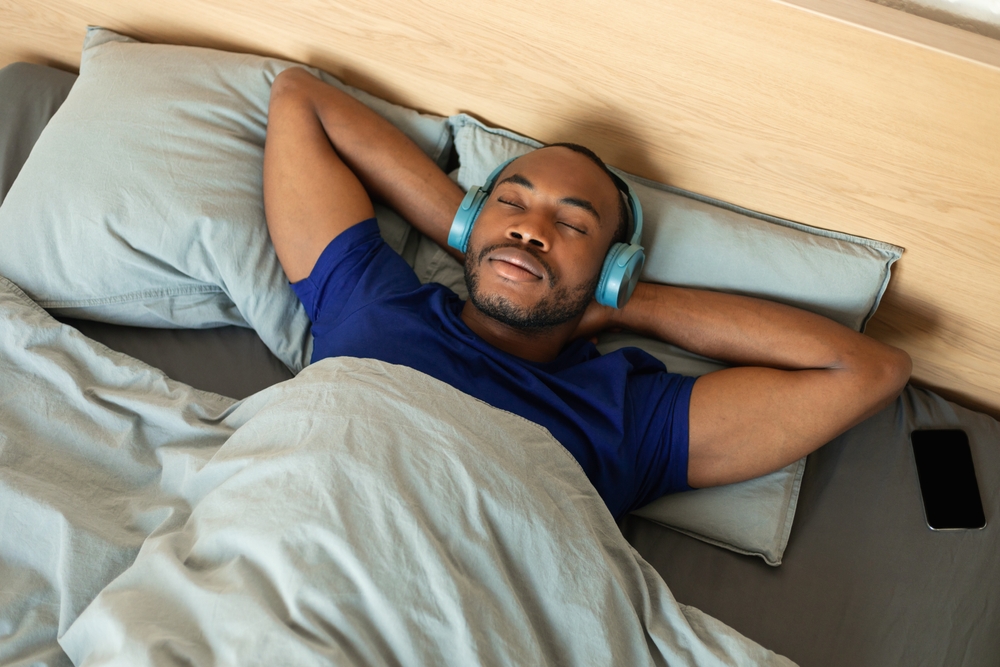You slip on your premium noise-canceling headphones, press the power button, and ahhhh — the world around you suddenly goes quiet. The rumble of the train, the chatter of your coworkers, the hum of the air conditioner, all magically disappear. It feels like stepping into another dimension.
But then something strange happens. You feel slightly off-balance. Maybe a bit dizzy. Your ears feel pressurized, like you’re in an airplane during takeoff. And is that a headache brewing? Welcome to the peculiar phenomenon many users experience with noise-canceling technology, a sensation that manufacturers rarely mention in their glossy advertisements.
The science behind the strange sensations
Noise-canceling headphones aren’t simply blocking sound like earplugs would. They’re actively engaging with the soundwaves around you, creating an acoustic battlefield right next to your eardrums.
Active noise cancellation works through a surprisingly elegant process. Tiny microphones on the headphones detect incoming sound waves. The internal processor then generates opposite sound waves — like photographic negatives but for sound — and plays them through the speakers. When the original noise meets its opposite wave, the two cancel each other out, resulting in blessed silence.
It’s technological wizardry that works remarkably well for consistent, low-frequency sounds like the drone of an airplane engine or the rumble of a bus. But this technological intervention doesn’t come without physiological consequences.
Your brain on noise cancellation
Your ears aren’t just passive receivers of sound. They’re sophisticated instruments that provide crucial information about your environment and help maintain your sense of spatial awareness and balance.
The missing sensory input puzzle
When noise-canceling technology removes certain frequencies from your auditory landscape, your brain suddenly stops receiving inputs it’s used to processing. This sensory deprivation creates a mismatch between what your eyes see and what your ears hear. Your visual system tells your brain you’re on a noisy subway, but your auditory system reports unusual silence. This contradiction can trigger disorientation and unease.
The pressure sensation mystery
Many users report feeling a change in ear pressure when using noise-canceling headphones, similar to being at high altitude. While the headphones aren’t actually changing the physical air pressure, they can create the illusion of pressure changes through their effect on the eardrum and the way sound is processed.
The vestibular system confusion
Your inner ear contains the vestibular system, which helps you maintain balance and spatial orientation. Low-frequency sounds affect this system, and when noise-canceling technology manipulates these frequencies, some people experience mild vertigo or dizziness as a result.
The brain wave disruption
Our brains are accustomed to processing a certain amount of background noise. When this ambient sound suddenly disappears, it can actually change your brain wave patterns. Some researchers suggest this alteration might contribute to the headaches or fatigue some users report after extended use.
Not everyone feels the weirdness
What makes this phenomenon particularly interesting is that not everyone experiences these disorienting effects. While some people feel immediate discomfort, others can wear noise-canceling headphones for hours without any adverse reactions.
This variability likely stems from individual differences in our vestibular systems, auditory processing pathways, and even psychological responses to sensory changes. Some people are simply more sensitive to the subtle physiological effects of noise cancellation technology.
Age can play a role too. Children and young adults often report more sensitivity to these effects, possibly because their sensory systems are more acute. Previous history of motion sickness, migraines, or inner ear problems might also predispose someone to discomfort with noise-canceling headphones.
Adapting to your sound sanctuary
If you love the peace that noise-canceling headphones provide but find yourself dealing with these disorienting side effects, you don’t necessarily need to abandon your audio investment. Many users find that with some adaptations, they can enjoy the benefits while minimizing the downsides.
Start with short sessions: Begin by using your noise-canceling headphones for brief periods, gradually increasing the duration as your brain adapts to the unusual sensory experience.
Try different levels of cancellation: Many modern headphones offer adjustable levels of noise cancellation. Experimenting with a medium setting rather than maximum cancellation might provide a better balance between noise reduction and comfort.
Take regular breaks: Even if you’re not experiencing obvious discomfort, removing your headphones periodically gives your brain a chance to recalibrate to normal sensory input.
Use them strategically: Reserve your noise-canceling headphones for the environments where you need them most, like airplane travel, rather than wearing them constantly throughout your day.
Consider transparency mode: Most premium noise-canceling headphones now offer a “transparency” or “ambient” mode that lets in some environmental sound. This can reduce the sense of disconnection while still blocking the most annoying background noises.
Stay hydrated: Some users report that proper hydration helps minimize the pressure and headache sensations sometimes associated with noise-canceling technology.
When to consider alternatives
For some people, no amount of adaptation makes noise-canceling headphones comfortable. If you find yourself consistently experiencing vertigo, nausea, headaches, or significant disorientation, it might be time to explore other options for managing environmental noise.
Passive noise-isolating earbuds or headphones can block a significant amount of ambient sound without the active technology that causes discomfort. High-quality earplugs designed for musicians can reduce noise levels while maintaining sound clarity. And for some environments, simple white noise played through regular headphones can effectively mask disruptive sounds without the disorienting effects of noise cancellation.
The future of more comfortable cancellation
As noise-canceling technology continues to evolve, manufacturers are becoming more aware of these physiological effects. Some newer models attempt to address these issues through more sophisticated algorithms that preserve certain frequencies or introduce subtle background sounds to reduce the sensation of pressure or disconnection.
Personalized noise cancellation might be the next frontier, with headphones that learn your individual sensitivity levels and adjust accordingly. Some developers are even exploring ways to use bone conduction technology alongside traditional noise cancellation to provide a more natural sensory experience.
The goal is to create technology that delivers the benefits of noise reduction without fighting against our natural perceptual systems. Until then, being aware of why your high-tech headphones might make you feel strange is the first step toward finding your personal balance between blessed quiet and sensory comfort.
So the next time you power up your noise-canceling headphones and feel that distinctive wooziness, remember, it’s not all in your head. Well, actually, it is all in your head, but in the most literal, neurological sense. Your brain is simply letting you know that while silence is golden, it can also be a little disorienting.


















